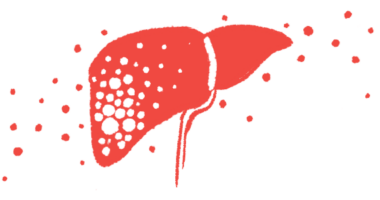MASLD tied to higher mortality risk from nearly every cause
As part of study, researchers ID'd more than 13,000 people with diagnosis

Compared with the general population, the risk of death is nearly twice as high in people with metabolic dysfunction-associated steatotic liver disease (MASLD), a form of fatty liver disease, a study based on data from Sweden suggests.
People with MASLD were at increased risk of death from almost every cause looked at, including diseases unrelated to the liver.
“Many people are not aware that they have fatty liver disease because it rarely causes any symptoms in the earlier stages,” Axel Wester, MD, PhD, one of the study’s co-senior authors and an assistant professor at Karolinska Institutet’s medicine department, in Sweden, said in an institute press release. “Our study shows that people diagnosed with MASLD have an increased risk of dying from many different diseases, not just liver disease.” Wester is also a physician at Karolinska University Hospital.
The findings underscore that “earlier multidisciplinary care might be required to reduce the risk of excess mortality in patients with MASLD,” the researchers wrote. The study, “Cause-specific mortality in 13,099 patients with metabolic dysfunction-associated steatotic liver disease in Sweden,” was published in the Journal of Hepatology.
In MASLD, there is an excess buildup of fat in the liver of people with underlying cardiometabolic risk factors such as type 2 diabetes, high cholesterol, and obesity. While it typically doesn’t cause health problems, MASLD can progress to cause serious liver damage. It’s also been associated with several conditions outside the liver, “including cardiovascular diseases, infections, and cancer,” the researchers wrote.
MASLD’s effect on death risk from other causes
Here, Wester and his colleagues looked at Swedish healthcare to identify MASLD patients seen at inpatient or specialized outpatient care databases from 2002 to 2020 to try to better understand how MASLD affects the risk of death from different causes. They identified more than 13,000 people with a documented diagnosis of MASLD.
Each MASLD patient was matched with up to 10 people from the general population who didn’t have liver disease, but were similar in age, sex, municipality, and calendar year.
A total of 12.4% MASLD patients died during a median follow-up of 4.7 years, while 7.7% of controls died during a median follow-up of 5.8 years.
The researchers then used statistical analyses to compare rates of death from various causes in the two groups. They found that the overall risk of death was about 85% higher in MASLD patients relative to the controls, a nearly twofold increase.
MASLD patients were also at increased risk of death not just from liver disease, but also from heart problems, cancer, lung problems, hormonal issues, and gastrointestinal conditions. In fact, only mental health disorders as a cause of death didn’t show a statistically significant increase in the MASLD patients.
“In this large population-based study, patients with a formal diagnosis of MASLD in inpatient or specialized outpatient care had a doubled mortality rate compared to the general population,” the researchers wrote, adding that “MASLD was associated with nearly all studied causes of death.”
The risk of death from hepatocellular carcinoma (HCC), the most common form of liver cancer, was 35 times higher among people with MASLD than among matched controls. Non-HCC liver disease was also much more likely to be a cause of death for MASLD patients, by nearly 27 times.
The third strongest association was hormonal disorders, including diabetes, which were nearly four times more likely to be a cause of death in the MASLD group relative to the control group. And the risk of death from non-liver gastrointestinal conditions was nearly three times higher in MASLD patients.
Estimated cumulative death rates at 15 years were highest for non-HCC cancer (7.3%) and cardiovascular disease (7.2%), further statistical analyses showed. These rates were considerably higher than those of non-HCC liver-related deaths (2.4%) and HCC-related deaths (0.8%).
These data underscore the importance of holistic care for people with MASLD, rather than focusing only on how the disease affects the liver.
“It is important that we do not only focus on the liver when treating patients with fatty liver disease,” said Hannes Hagström, PhD, co-author of the study at the Karolinska Institutet in Sweden. “A holistic approach and early intervention involving different medical specialities can be crucial to improve the prognosis for these patients.”






